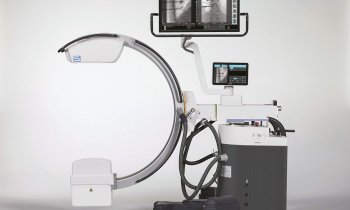Qualified wound treatment starts with the identification of risks
By Heidi Heinhold
The content of training courses on wound care and risk assessment would have one believe that chronic wounds are merely a marginal problem of medical care. The opposite is the case. The number of chronic wounds, and therefore cost of care, are on the increase. Where might the problems and sources of these errors lie?
The care of chronic wound patients is always about solving individual problems in order to achieve the best possible result. Here, the basic principles of risk management standards are very important. However, their instruments - risks assessment instruments (RAI) and standards — are not technically the norm. Their meaningfulness should be checked upon implementation and, if need be, modified. There may be potential problems with implementation, which could point to shortcomings in training.
The patient and underlying disease
The problem lies not only in insufficient training of doctors and nurses in the areas of expertise, such as diabetology and phlebology, but also in the problem of motivating patients to change their lifestyles. Early symptoms that may point to an underlying disease such as Diabetes mellitus (tiredness, exhaustion or mood swings) are often blocked out, and a doctor is only consulted when a wound develops, for example on a foot, which refuses to heal.
Therefore, doctors and nurses should learn that affected patients determine the amount of medical help for which they will ask, and therefore may possibly contribute towards a deterioration of their overall situation. Moreover, work schedules must allocate time to inform patients or be informed about the patients’ moods. The DRG and corresponding OPS allocate no time for this. It is imperative that the respective expenditure of time required is recalculated.
Dealing with risk scales
Nurses need training to recognise risks for individual patients and to deal with them in an adequate way. They need to be familiar with the systematics of risk scales. With all RAIs, it is not so much a question of whether they can prevent pressure ulcers, but whether observance of risks that can lead to pressure ulcers, i.e. early detection of stage I, is possible. The particularly need to be aware that a stage I decubitus ulcer, i.e. permanent redness, already signals tissue damage. It would be wrong to wait until stage II has developed, because then a wound is actually detectable. According to ICD 10 GM stage I, permanent redness is recognised as a disease of the skin and as such requires urgent treatment.
Wound assessment based on photographs in the context of documentation is particularly prone to mistakes in the case of stage I pressure ulcers. The symptom ‘persistent redness’ depends on the quality of reproduction and medium (paper, printer etc.) and can be very much misinterpreted, as proved in a 2006 study. The Kappa score for 473 qualified nurses who had to assess different degrees of decubitus ulcers based on photographs was only 0.38 (Defloor T. et. al. Reliability of the European Pressure Ulcer Advisory Panel classification system. J Adv Nurs 2006, Apri; 54 (2): 89-98). It also does not make much sense to use risk scales that were developed for use in geriatric care on intensive care units, only to find out that they are unsuitable for this purpose.
National expert and general standards
Not all demands resulting from national standards can be met at all levels. However, the content of the respective standards of care must meet the national expert standards and must be based on it so that care and treatment results become comparable, and problems and their sources can be detected and eliminated in the context of quality assurance. The standards must be set in a way that allows for deviations, such as the ‘When a patient doesn’t fit a standard’. These deviations then become part of nursing care planning.
Nurses and doctors must learn that expert standards and standards form a framework that allows for individual solutions. These changes must then be documented and justified in the respective treatment and care plans.
01.07.2009






